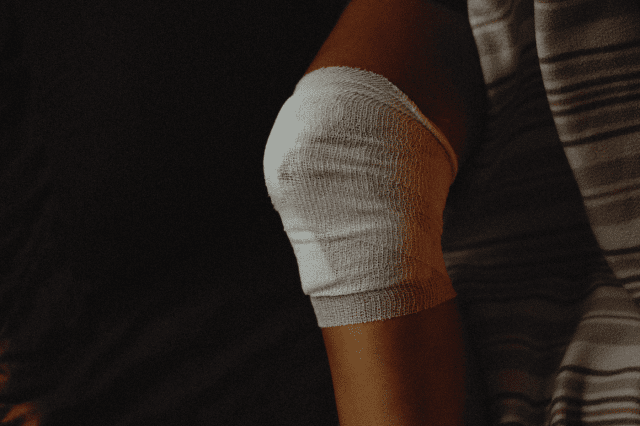Dealing with a slow-healing leg wound can be incredibly frustrating, and it can feel discouraging when it doesn’t seem to improve. But sometimes, these wounds are a sign that there’s an underlying vein issue that needs attention. Poor circulation, chronic venous insufficiency, or even unnoticed habits could be slowing down your recovery.
At Vein and Skin Center of Hawaii, we understand how concerning this can be, and we specialize in uncovering the root causes of vein-related wounds. If your wound isn’t healing as it should, we’re here to help you understand what might be happening and guide you toward the right steps for healing. Let’s work together to get you on the path to recovery.
Understanding Why Some Leg Wounds Heal Slowly
Vein-related wounds, also known as venous ulcers, develop due to poor circulation, making it difficult for the body to deliver oxygen and nutrients necessary for healing. These wounds commonly appear on the lower legs and ankles and can become chronic without proper care.
Symptoms include swelling, skin discoloration, pain, and an open sore that fails to improve over time. If left untreated, a slow-healing wound can lead to infections, deep tissue damage, and even more severe complications.
Hidden Reasons Your Leg Wound Is Taking Too Long to Heal
If your leg wound isn’t healing, the following factors could be playing a role:
1. Poor Circulation Due to Vein Disease
Chronic venous insufficiency (CVI) is one of the leading causes of slow-healing leg wounds, particularly venous ulcers. When veins struggle to return blood to the heart, blood pools in the lower legs, increasing pressure on the skin and delaying the body’s natural healing process.
This condition is often associated with varicose veins or a history of deep vein thrombosis (DVT), which can lead to damaged veins and chronic swelling. If left untreated, poor circulation can cause wounds to worsen over time, potentially leading to infections or even permanent skin damage.
2. Uncontrolled Swelling (Edema)
Excess fluid buildup (edema) in the legs can interfere with wound healing by compressing small blood vessels, reducing oxygen supply to the damaged tissue, and preventing proper immune function. Swelling can be triggered by prolonged sitting or standing, lack of movement, or untreated vein disease, making it harder for your body to fight infections and rebuild tissue.
Managing edema through leg elevation, compression therapy, and medical intervention is essential for promoting faster healing and preventing complications.
3. Undiagnosed Infections
Even small wounds can become a gateway for bacteria, leading to infections that significantly delay healing. Signs of infection include increased redness, swelling, warmth around the wound, and discharge of pus or fluid. Left untreated, an infection can spread deeper into the tissue, causing serious complications such as cellulitis or even sepsis, a life-threatening condition
If you suspect an infection, seeking medical attention promptly can prevent further damage and improve recovery time.
4. Poor Wound Care Practices
Incorrect wound care can significantly slow the healing process or even worsen the wound. Using harsh chemicals like hydrogen peroxide or alcohol can damage healthy tissue, while improper dressings can lead to excessive dryness or excessive moisture, both of which hinder new tissue growth.
The right wound care approach involves gentle cleaning, the application of appropriate wound dressings, and regular monitoring to prevent infection and promote healing.
5. Lack of Compression Therapy
Compression therapy is a cornerstone treatment for venous ulcers and other slow-healing leg wounds related to vein disease. Without it, blood continues to pool in the lower legs, further increasing swelling and delaying wound closure.
Medical-grade compression stockings help improve circulation by applying gentle pressure to the veins, reducing swelling, and encouraging proper blood flow. Consistent use of compression therapy can make a significant difference in healing speed and overall leg health.
6. Nutritional Deficiencies
Proper nutrition plays a crucial role in wound healing. Your body needs adequate protein to build new tissue, vitamin C for collagen production, and zinc to support immune function and cell repair.
A diet lacking these essential nutrients can slow tissue regeneration, increase the risk of infection, and extend recovery time. Ensuring a well-balanced diet with sufficient vitamins and minerals can provide your body with the building blocks it needs for faster healing.
7. Smoking and Poor Lifestyle Habits
Smoking is a major risk factor for delayed wound healing because it restricts blood flow by narrowing blood vessels, reducing oxygen delivery to the wound. Excessive alcohol consumption, dehydration, and a sedentary lifestyle can also negatively impact circulation and immune function.
Making lifestyle changes—such as quitting smoking, increasing physical activity, and staying well-hydrated—can significantly improve your body’s ability to heal and prevent future leg wounds.
8. Underlying Health Conditions
Certain chronic health conditions can impair circulation and slow down the body’s natural wound-healing process. Diabetes, for example, can cause nerve damage (neuropathy) and poor blood flow, increasing the risk of slow-healing wounds and infections.
Peripheral artery disease (PAD) restricts blood supply to the lower legs, making it difficult for oxygen and nutrients to reach the wound. Properly managing these conditions with medical guidance can enhance your body’s ability to heal and reduce complications.
When to Seek Professional Help
If your leg wound isn’t healing within a few weeks, it’s time to consult a vein specialist. You should seek medical attention if you experience:
- A wound that remains open or worsens over time
- Increased pain, redness, or swelling around the wound
- Signs of infection, such as pus or a foul odor
- Darkened skin or thickening around the wound site
Get Expert Vein Wound Care at Vein and Skin Center of Hawaii
At Vein and Skin Center of Hawaii in Honolulu, we provide advanced treatments to promote healing and improve circulation. Whether you need specialized wound care, compression therapy, or vein treatments like sclerotherapy or laser therapy, our expert team is here to help. Contact us today to schedule a consultation and take the first step toward recovery.
Frequently Asked Questions (FAQ)
Why is my leg wound not healing?
Slow-healing wounds are often caused by poor circulation, chronic venous insufficiency, or underlying health conditions. Proper wound care, lifestyle adjustments, and medical treatment can improve healing.
Can compression therapy help my wound heal faster?
Yes, compression therapy helps reduce swelling and improves circulation, making it an essential part of venous ulcer treatment.
How can I tell if my wound is infected?
Signs of infection include redness, increased pain, swelling, pus drainage, or a foul smell. If you suspect an infection, seek medical attention immediately.
Can vein treatments help prevent future leg wounds?
Yes, treating vein disease with procedures like sclerotherapy or venous ablation can improve circulation and reduce the risk of future ulcers.
What can I do at home to support wound healing?
Keep the wound clean, elevate your legs, wear compression stockings, stay active, eat a nutrient-rich diet, and avoid smoking to support faster recovery.

